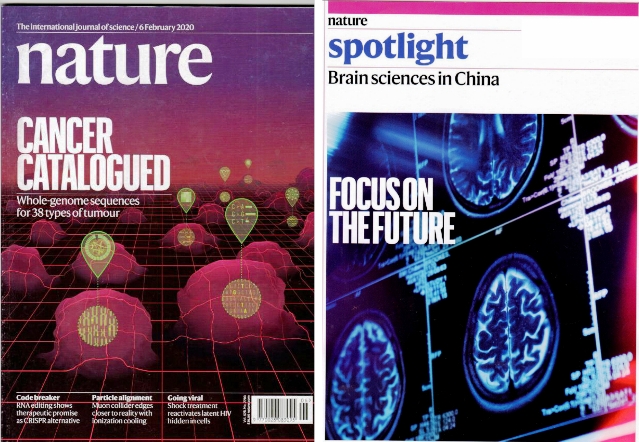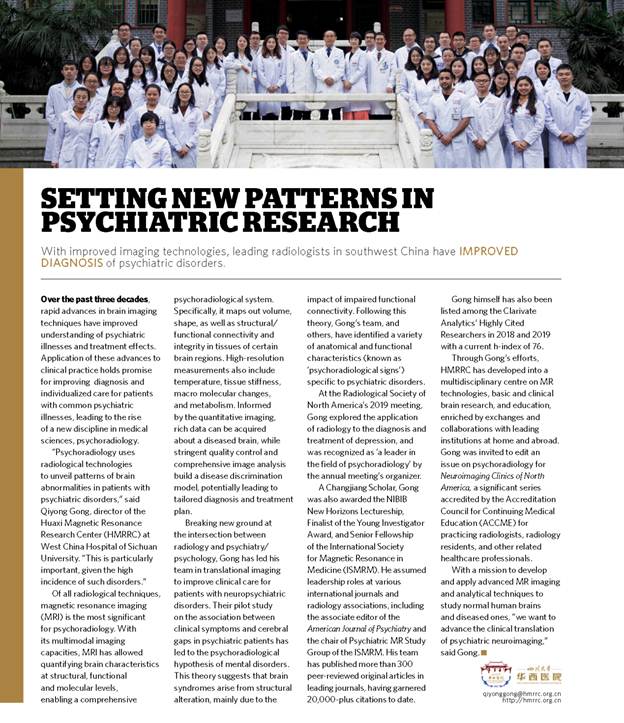Nature,has recently reported, in its Spotlight column, the Huaxi Magnetic Resonance Research Center (HMRRC) for its important contributions to brain science through its innovation mode from” 0 to 1”.

(Credit: West China Hospital, Sichuan University)
Over the past three decades, rapid advances in brain imaging techniques have improved understanding of psychiatric illnesses and treatment effects. Application of these advances to clinical practice holds promise for improving diagnosis and individualized care for patients with common psychiatric illnesses, leading to the rise of a new discipline in medical sciences, psychoradiology.
Of all radiological techniques, magnetic resonance imaging (MRI) is the most significant for psychoradiology. With its multimodal imaging capacities, MRI has allowed quantifying brain characteristics at structural, functional and molecular levels, enabling a comprehensive psychoradiological system. Specifically, it maps out volume, shape, as well as structural/ functional connectivity and integrity in tissues of certain brain regions. High-resolution measurements also include temperature, tissue stiffness, macro molecular changes, and metabolism. Informed by the quantitative imaging, rich data can be acquired about a diseased brain, while stringent quality control and comprehensive image analysis build a disease discrimination model, potentially leading to tailored diagnosis and treatment plan.

Professor Qiyong Gong is the team leader. AChangjiang Scholar, Qiyong Gong was also awarded the NIBIB New Horizons Lectureship, Finalist of the Young Investigator Award, and Senior Fellowship of the International Society for Magnetic Resonance in Medicine (ISMRM). He assumed leadership roles at various international journals and radiology associations, including the associate editor of the American Journal of Psychiatry and the chair of Psychiatric MR Study Group of the ISMRM. His team has published more than 300 peer-reviewed original articles in leading journals, having garnered 20,000-plus citations to date. Gong himself has also been listed among the Clarivate Analytics’ Highly Cited Researchers in 2018 and 2019 with a current h-index of 76.(Credit: West China Hospital, Sichuan University) Over the years, HMRRC has developed into an interdisciplinary "medicine + information" center which integrates the cutting-edge magnetic resonance technology, basic brain science, clinical medicine research and education.
Article link:https://www.nature.com/nature/volumes/578/issues/7793
